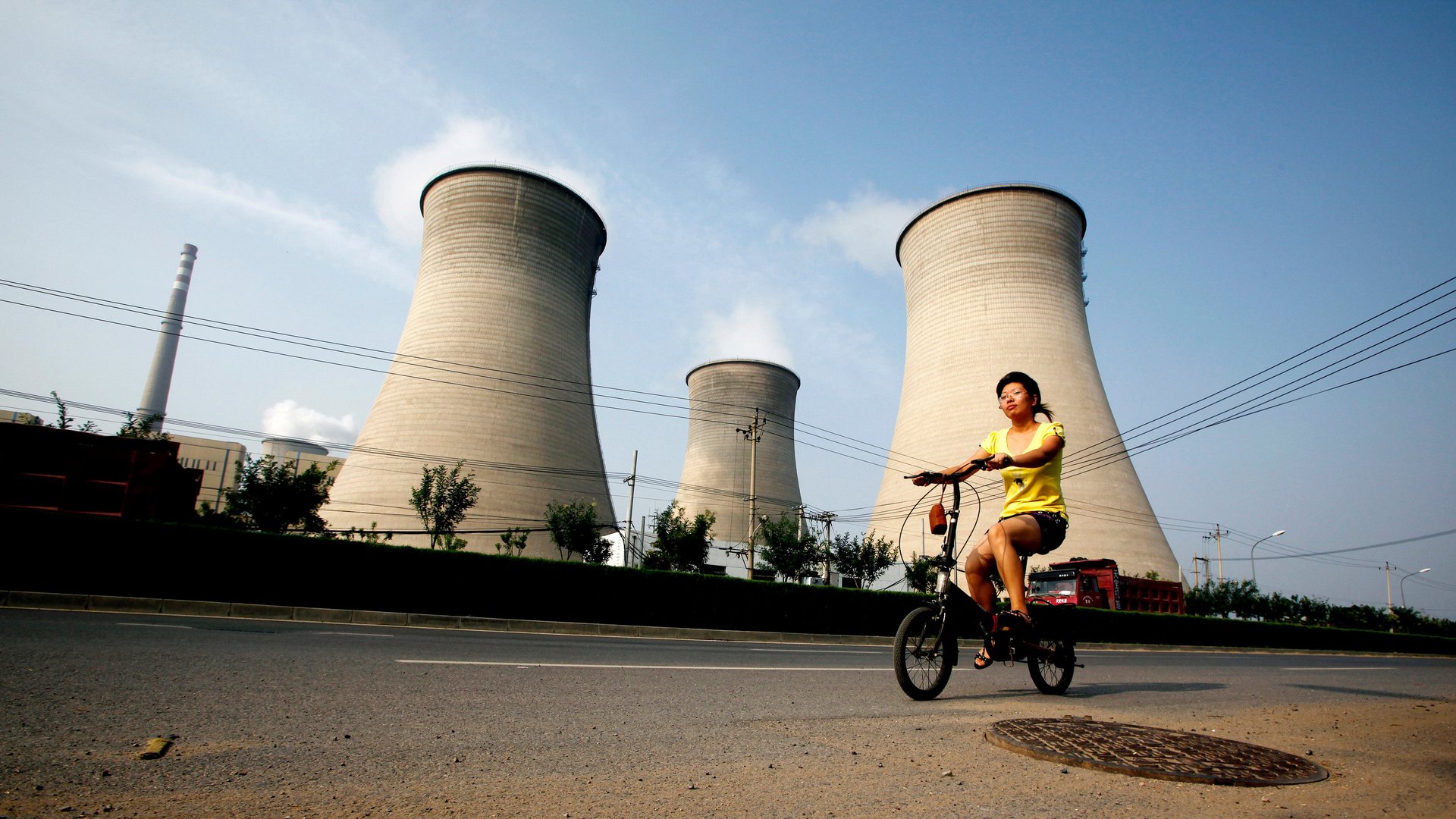Beijing’s deadly air pollution has forced it to close all of its large coal-power plants
Pollution in Beijing can sometimes literally go off the charts. The result, unsurprisingly, is the death of thousands of people each year.


Pollution in Beijing can sometimes literally go off the charts. The result, unsurprisingly, is the death of thousands of people each year.
What makes it worse for Chinese bureaucrats, who maintain strict control of the news, is that hiding air pollution is hard. The Beijing sky rarely ever shows its blues.
That’s why in 2013 the city’s administration swore to stop using coal in the large power-plants that supply electricity to the capital and its 21 million inhabitants. By 2015, three of its four coal-fired power plants had been shut down and have switched to natural gas. On Saturday (Mar. 18), the Huaneng Beijing Thermal Power Plant, which produced 845 MW of power—more than a tenth of the power created by all power plants near Beijing—was closed down, too. Its transition to burning natural gas will start soon.
But the city’s hunger for power means it’s unlikely to run on coal-free energy any time soon, or that regular blue-skies will become a reality. Beijing still gets a chunk of its power from neighboring provinces such as Hebei and Inner Mongolia, where huge coal-power plants are in operation.
Coal is the dirtiest of fossil fuels. Per kilogram, it produces the least amount of energy and the most amount of pollution (as carbon dioxide, particulate matter, nitrogen oxides, and sulfur oxides). And China consumes a lot of it.
With China signing on to the Paris climate agreement and setting up ambitious emissions-reduction goals, the country has two ways forward: switch to cleaner energy, and, if it can’t, then capture and bury the emissions being produced. On both counts, the country is making progress.
China’s coal consumption has consistently fallen since reaching its peak in 2012. It is achieving this by switching to natural gas and investing large sums in solar and wind energy.
More recently, China has also started working (paywall) on carbon-capture technologies. These allow a power plant to burn fossil fuels but not emit carbon dioxide. The collected emissions are either stored underground or put to some use. The construction of the first such plant in China is likely to begin in the next few weeks, according to Alex Zapantis of the Global CCS Institute.
The International Panel on Climate Change shows that to hit global emissions targets, carbon-capture technologies are vital. As the world’s biggest carbon emitter, China recognizes that it must take the lead, said Zapantis. That’s why in the next decade China has plans to build the most number of power plants with some form of carbon-capture technology attached.